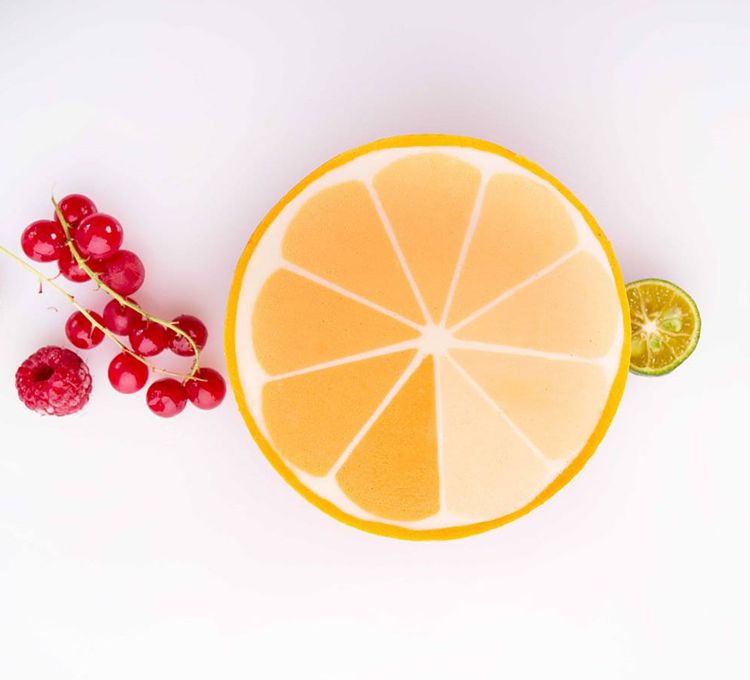
GUANGDONG KELONG BIOTECHNOLOGY CO., LTD.
Add: No.5-17 and No.5-32, South area of Qibao Industry and Trade, Huicheng, Xinhui, Jiangmen, Guangdong, China
Tel:+86-750-6978788
Fax:+86-750-6978868
Wechat: 13828063050
Website: http://revistapescaperu.com
Email: export@kelongbio.com
marketing@kelongbio.com
Color is an important indicator of the sensory quality of food. In order to maintain a good sensory quality, many food manufacturers use food coloring to maintain color and make foods coveted.

Food coloring is divided into natural food coloring and synthetic food coloring. Natural food coloring refers to the pigment material in natural food. Because it is sensitive to light, heat, acid, alkali, etc., it is easy to fade and discolor during processing and storage. Its sensory performance. Therefore, synthetic food coloring is sometimes added to foods. Synthetic pigments, that is, artificially synthesized food colorings, have many advantages, such as bright color, strong tinting strength, and various color tones, but it has a major drawback, namely toxicity (including toxicity, diarrhea and carcinogenicity). These toxicities are derived from arsenic, lead, copper, phenol, aniline, ether, chloride and sulfate in synthetic pigments, which can cause varying degrees of harm to humans. China's 2006 "Hygienic Standards for the Use of Food Additives", which stipulates the maximum use of synthetic food coloring, such as the use of pure pigments, arsenic, lead, copper, phenol, chloride, etc. These regulations are intended to limit impurities in the pigment to reduce the harm to the human body.
At present, the synthetic food colors allowed in China mainly include amaranth, carmine, lemon yellow, sunset yellow and indigo. They are used for fruity water, fruit powder, sherbet, soda, blended wine, red green silk, canned food, and cake surface. These synthetic food colors do make the surface of foods lovable, but they are prohibited from being used in the following foods: meat and processed products (including processed viscera), fish and processed products, fruits and their products (including juices). , fruit, jam, jellies and brewed fruit wine), condiments, baby food, biscuits, etc.
Natural food coloring comes directly to the automatic plant, except for the yellow vine, the others are not poisonous to the human body. However, the state also stipulates the maximum amount of use for each natural food coloring for safety. The natural food colors currently allowed to be used are turmeric, safflower yellow pigment, capsanthin pigment, shellac pigment, red yeast rice, sauce color, beet red, chlorophyll copper sodium salt and β-carotene. The use of sauce color (also known as sugar color) should be noted. The sauce color is obtained by heating the sucrose sauce and maltose sauce at a high temperature of 160 ° C - 180 ° C for 3 hours, causing it to be caramelized and then neutralized with a base. Caramel itself is not toxic, but if ammonium salt is added during the production process, the carbohydrate contains a nitrogen-containing heterocyclic compound 4-methyl oxazole, which has a strong convulsive effect. If the content is too large, Harmful to the human body. Therefore, China's regulations only allow the use of sauces made without ammonium salts.
Natural food coloring can be used for all food types that can be used in the above synthetic food coloring. Therefore, in order to add color to food, it is best to use natural pigments, even if the cost increases, consumers are willing to accept. Among the natural food colors, two are closely related to daily diet. One is beta-carotene, which is one of the normal ingredients of human food and an essential nutrient. It is used as a food additive and is not only harmless but beneficial. When the home-made cream cake is colored, it is both beautiful. The second is red yeast rice, which is one of the traditional food colorants traditionally used in China. It is mainly used to make red bean curd and red sausage. Because it dyes proteins well and has good heat resistance, it can be used by households to make cooked meat products.
In recent years, all countries in the world have tended to use natural food coloring. Any natural food coloring that is stable to heat, light and oxidation and is not easily affected by metal ions or other compounds should be managed as long as it is harmless to the human body. I use it. This has led to the development of a natural pigment, the production of heat, a variety of edible plants and wild plants are used to extract natural pigments. There are two factors in the development and production of this natural pigment. 1. People mistakenly believe that natural pigments are equal to non-toxic pigments, while synthetic pigments are toxic. 2. The methods and equipment for producing natural food coloring are relatively simple, easy to obtain results, and easy to transfer to township enterprises. Due to the above two reasons, the production of natural food coloring has emerged in recent years. Some social enterprises are competing to convert the transferred technology into productivity and production, while natural food coloring has its own shortcomings (more expensive, color fastness). Poor, etc.), sales are difficult, resulting in waste of manpower and material resources and product backlog.
Natural food coloring is not equal to non-toxicity. This simple scientific principle is often overlooked. To evaluate the toxicity of a certain substance, except for the history that people have been eating for many years, only animal experiments can be used to calculate people. The maximum allowable intake per kilogram of body weight per person per day is calculated in milligrams. . It is generally considered safe in this range. The larger the ADI value, the less toxic. Many natural pigments have less toxicity data and fail to develop ADI values. That is to say, their toxicity is still unclear. Some natural pigments have a small ADI value and are not safer than synthetic pigments. Therefore, the rational use of natural food coloring is equally noteworthy as the use of synthetic food coloring.